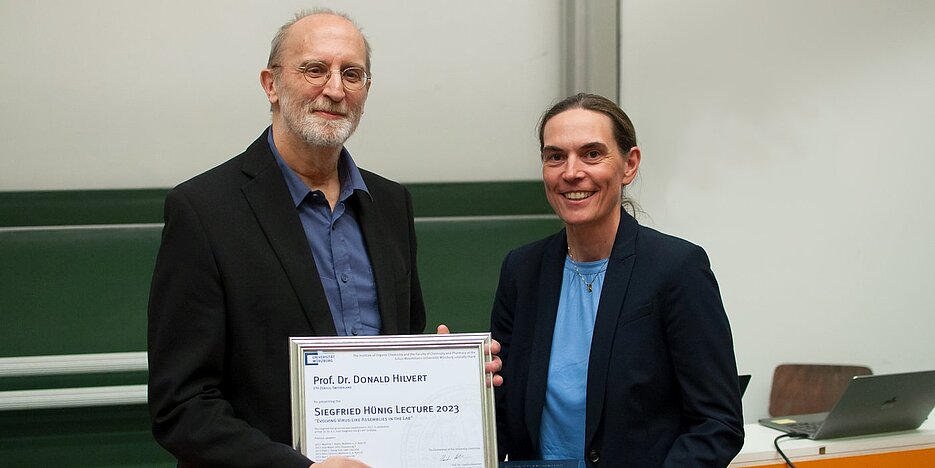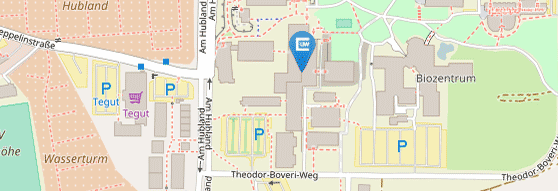How Did the First Viruses Evolve?
06/16/2023Donald Hilvert gave a plausible answer to this question in the Siegfried Hünig Lecture 2023 with fascinating experiments on directed evolution in the laboratory.
Contrary to what the auditorium is used to at this annual ceremony, Professor Hilvert managed to give his lecture almost completely without chemical structural formulas and reaction equations. The reason is that the synthesis of the impressively large and, thanks to their symmetry, very aesthetic cage molecules is carried out biochemically by an enzyme called lumazine synthase in E. coli cultures.
Evolution in the laboratory
In Hilvert's laboratory, this enzyme was suitably modified to form protein cages, so-called nucleocapsids, which enclose their own mRNA code inside them and thus protect against external influences, i.e. ultimately have a comparable structure to most viruses. However, a multi-stage selection process is required before a high degree of stability of these virus-like structures is achieved through mutations in the genetic code and thus in the protein structure. The auditorium was allowed to closely watch and "grasp" some of these structures in the form of models from the 3D printer.
Insights and applications
Hilvert's findings support the theory that the first natural viruses evolved from RNA or DNA molecules from host cells by acquiring the ability to replicate independently of the host cell's genome or its RNA. To do this, however, they must behave parasitically and use the biochemical machinery of their host cell.
Possible applications of the capsids as non-viral transport molecules are conceivable for vaccines and drugs, particularly for mRNA vaccines.
Donald Hilvert
Donald Hilvert has been a professor at the Laboratory of Organic Chemistry at ETH Zurich since 1997, after holding positions in New York (Columbia University and Rockefeller University) and at the Scripps Research Institute in California. Professor Hilvert’s research program utilizes the tools of chemical biology to study and engineer proteins, including designer enzymes with customized catalytic activities, and molecular containers made of self-assembling proteins with prospective uses in biology and medicine.
Professor Hilvert’s outstanding research has been recognized by a number of awards, including the Arthur C. Cope Scholar Award of the ACS, the Pfizer Award in Enzyme Chemistry, the Protein Society’s Emil Thomas Kaiser Award, and the Ronald Breslow Award for Achievements in Biomimetic Chemistry. He received an honorary doctorate from Uppsala University and is an elected member of the American Academy of Arts and Sciences.
Siegfried Hünig
Prof. Dr. Dr. h.c. mult. Siegfried Hünig was a visionary chemist after whom not only the world-famous Hünig base was named, but who also provided important initial impulses in several areas of physical-organic chemistry and, as a passionate university lecturer and institute director, was also influential in the development of the chemical institutes in Würzburg in the second half of the 20th century.
In his honor, the Siegfried Hünig Lecture was initiated in 2011, on the occasion of the 90th birthday of Prof. Dr. Dr. h. c. mult. Siegfried Hünig. Each year an internationally renowned chemist is invited to give a talk at the University of Würzburg. Prof. Hünig was able to participate in the event himself until 2018, at the age of 97, and did so with great pleasure. In 2021, he passed away a few days before his 100th birthday and before being included in the "Heroes of Chemistry" section of the journal Angewandte Chemie.



